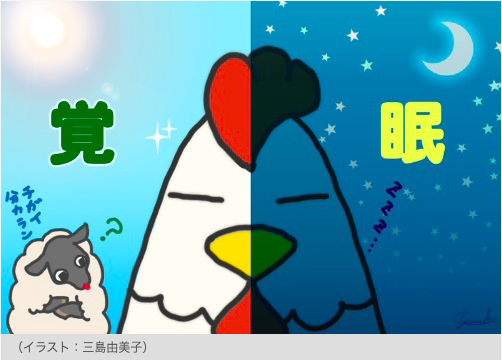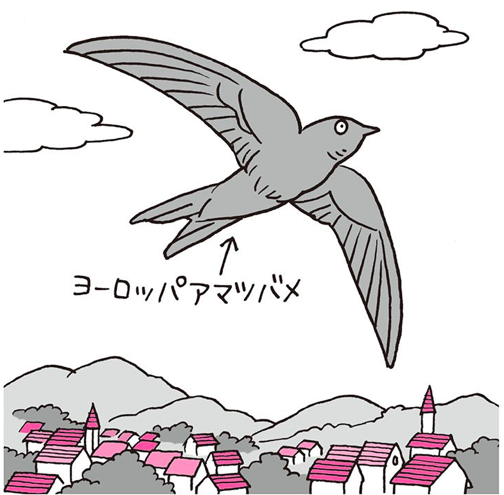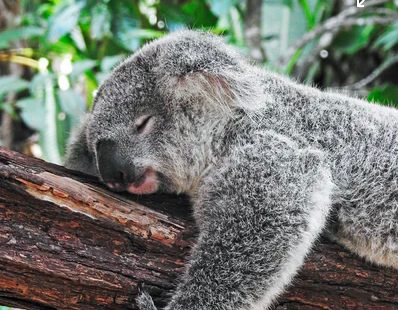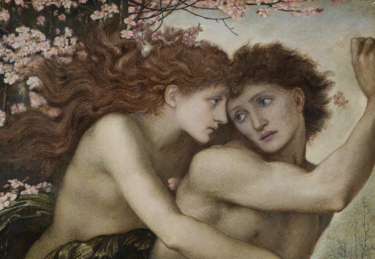はじめに
伊豆の大瀬崎でナイトダイブにチャレンジしたことがある。天候が落ち着いているときでないと危険だけど、その日は風もなく、静かな夜だった。バディと一緒に海に潜っていくと、岩場に隠れるようにして魚が眠っていた。ライトを向けても起きない。手に取ってみると、しばらくすると気づいたようで、手のひらから逃げるように泳いで行った。魚も夜は眠っているのだとその時に実感したのをよく覚えている。今日はそんな人間を含めて、動物の眠りについての考えてみたいと思った。興味のある方はぜひ視聴してみて欲しい。
(出典:YouTube)
なぜ脳は左脳と右脳があるのか
昆虫の脳は左右に分かれていないが、脊椎動物になると脳が発達し、大脳・中脳・小脳と文化すると同時に左右に分かれている。手足や目・耳などが左右に存在するのと同時に脳も左右に分化したのだろうか。言語は左脳とイメージは右脳と一般的には言われているが、動物の場合は必ずしも左右対象で機能しているわけではない。動画の中でいつくか事例が紹介されていたので、少し調べてみたい。
イルカ
学生時代は授業中によく寝ていたので、友達からは「眠狂四郎」などと呼ばれていた。つまらない授業と感じると瞼が閉じてしまうけど、脳は完全に眠っていたわけではない。でも、多くは授業終了のチャイムしか感じなかった(汗)。脳の半分だけ寝て、他の半分で授業を聞くようなテクニックがあればぜひ使いたかった。そんな半球睡眠の技をイルカは身に付けている。イルカは数分おきに水面に浮上して呼吸する必要があるので、24時間どちらかの脳は活動しているようだ。

(出典:発見ネット)
オットセイ
半球睡眠の技を駆使するのはイルカだけではない、例えばオットセイも水面で眠りながら下側の目は開いてサメなどの天敵の有無を監視するけど、上側の目は閉じて眠るという高度な機能を会得している。

(出典:National Geographic)
渡鳥
ヨーロッパアマツバメは、北ヨーロッパとサハラ砂漠の間を往復する。この間、10ヶ月を一度も著することなく飛行することが2016年に確認されたという。すごい。10ヶ月はすごすぎるけど、一般的な渡り鳥は10日間ほどはヒヨドリでも飛び続ける。その間、ヒヨドリは片側または両側の脳半球を使って睡眠をとる。気流に乗りながら、数秒単位で睡眠をとる。マガモは群れで飛ぶが、周辺にいるカモは外向きの目を開け、内側の目を閉じて半球睡眠をしながら飛行するという。面白い。

(出典:毎日が発見)
10の質問
Q1) How many days can dolphins stay alert?
これは難易度が高い。動画の後半でイルカは少なくとも5日間、高い覚醒度を維持することが確認されているとあるので、”5days”が正解か。
Q2) How long do frigatebirds sleep on the air compared to on the land?
渡り鳥は空中を長時間飛行する時には、気流に乗りながら数秒単位で睡眠をとるという説明があった。しかし、陸上の睡眠時間に比べると8%未満であり、睡眠時間に対する耐性が非常に高い。なので、”less than 8%”が正解か。学生時代に夕方から翌朝まで夜通し50km程度を歩き続けるイベントがあった。その時に初めて半分眠りながら歩き続けることが可能なことを体験した。きっとそんな感覚なのだろう。
Q3) People cannot sleep well when they participate in a sleep study for the first time. What is this phenomenon called?
初めて訪問した場所で初めて使うホテルの慣れないベッドに寝る時には、なかなか寝付けないことがある。自分の場合には、食事をして、用が済んだら、ベッド脇でつまみを頂きながらビールを飲んで、少し気になるサイトをスマホでチェックしながら眠ってしまうことが多い。朝は普段より早く目が覚めるのでシャワーを浴びて、身支度して出発だ。なお、正解は動画の中で、”first night effect”と呼んでいたので、これだろう。
Q4) In what situation do mallard ducks show unihemispheric sleep?
かもは群れで飛び。その群れの端にいるカモは、外側の目を開けて非対称睡眠をするので、答えは”edge”か。
Q5) What is the posture known in fur seals where they float horizontally, holding their nostrils above the surface, closing their upward-facing eye, and keeping their downward-facing eye open?
オットセイは何週間もかけて海を移動する。その時に、オットセイは水平に浮きながら、鼻孔を水面上に出し、上向きの目を閉じ、下向きの目を開けたまま、半球睡眠に入る。正解は”Bottling”のようだけど、よくわからないかった。Floatingとかなら理解できる。
Q6) Which animals are known to show unihemispheric sleep?
バンドウイルカのことを英語では”Bottlenose dolphin”という。イルカも半球睡眠を実践している。
Q7) When a person suffering from a sleep problem in a new place hears an infrequent sound, the person can
“first night effect”についての質問だ。そんな時に何をするかだ。結局次の3つ全てだったけど、これも難しいと思った。”respond faster”+”wake up faster”+”show a bump in brain activity in the left hemisphere”
Q8) Why do humans show asymmetric sleep with the first-night effect?
なぜ人には初夜効果があるのか。初夜というと別のことを連想しそうだけど、英語にすると次のような感じだろうか。
Q9) Why do some marine mammals and birds show unihemispheric sleep?
なぜ哺乳類や鳥類で半球睡眠をするのは必要に迫られてだろう。英語にすると次のような感じだろうか。
Q10) Why do we sleep?
これは根源的な質問だ。なぜヒトは眠るのか?と聞かれても困る。英語で回答すると次のような感じだろうか。
まとめ
睡眠と脳の仕組みは興味深い。以前も「夢をなぜみるのか」について投稿したけど、興味は尽きない。個人的には、左右に分化した脳にそれぞれ異なる役割を担わせたところから、言葉が出てきたのではないかという仮説を持っている。つまり、ヒト以外は、左脳と右脳は同じ処理をしている分散処理システムだけど、人だけは機能分散をした。その結果、右脳で考えていることと左脳で考えていることが微妙に異なることが生じる。そのため、考えていることを絵で書くだけではなく、言葉を用いて表現するようになり、それがヒトとヒトのコミュニケーションに発展していったと考えている。いつか、深掘りできるといいなと思う。
以上
最後まで読んで頂き、ありがとうございます。
拝
参考:英文スクリプト
Let’s Begin…Many animals need sleep. But all of the threats and demands animals face don’t just go away when it’s time to doze. That’s why a range of birds, mammals, and even humans experience some degree of asymmetrical sleep, where parts of the brain are asleep and other areas are more active. So, how does it work? Masako Tamaki explores how animals’ brains remain vigilant even at their most vulnerable.
Many animals need sleep. Even brainless jellyfish enter sleep-like states where they are pulseless and respond more slowly to food and movement. But all of the threats and demands animals face do not just go away when it is time to doze. That is why a range of birds and mammals experience some degree of asymmetrical sleep where parts of their brain are asleep and other areas are more active.
This is even true for humans. So how does it work? All vertebrate brains consist of two hemispheres: the right and left. Brain activity is usually similar across both during sleep. But during asymmetrical sleep, one brain hemisphere can be in deep sleep while the other is in lighter sleep. And in an extreme version called “unihemispheric sleep”, one hemisphere may appear completely awake while the other is in deep sleep.
Take bottlenose dolphins. Their breathing is consciously controlled, and they must surface for air every few minutes or they will drown. When they have a newborn calf, they must actually swim nonstop for weeks in order to keep it safe. So dolphins sleep unihemisphericallly, with just one hemisphere at a time. This allows them to continue swimming and breathing while snoozing.
Other marine mammals also need asymmetrical sleep. Fur seals might spend weeks on end migrating at sea. They slip into unihemispheric sleep while floating horizontally, holding their nostrils above the surface, closing their upward-facing eye, and keeping their downward-facing eye open. This may help them stay alert to threats from the depths.
Similar pressures keep birds partially awake. Mallard ducks sleep in groups, but some must inevitably be on the peripheries. Those ducks spend more time in unihemispheric sleep, with their outward-facing eyes open and their corresponding brain hemispheres more active. Other birds have been shown to catch z’s in midair migration. While undertaking non-stop transoceanic flights of up to 10 days, frigatebirds either sleep with one or both hemispheres at a time. They do so in secnds-long bursts, usually while riding air currents. But the frigatebirds still sleep less than 8% of what they would on land, suggesting a great tolerance for sleep deprivation.
It is currently unclear whether asymmetrical sleep packs the same benefits as sleep in both hemispheres and how this varies across species. In one experiment, fur seals relied on asymmetrical sleep while being constantly stimulated. But in recovery, they showed a strong preference for sleep across both hemispheres, suggesting that it was more restorative for them. Dolphins, on the other hand, have been observed to maintain high levels of alertness for at least five days. By switching wich hemisphere is awake. They get several hours of deep sleep in each hemisphere throughout a 24-hour period.
This may be why unihemispheric sleep alone meets their needs. So, what about humans?
Have you ever woken up groggy after your first night in a new place? Part of your brain might have spent the night only somewhat asleep. For decades, scientists have recognized that participants sleep poorly the first night in the lab. It is actually customary to toss out that night’s data. In 2016, scientists discovered that this “first-night effect” is a very subtle version of asymmetrical sleep in humans. They saw that, during the first night, participants experience deeper sleep in their right hemisphere and lighter sleep in their left. When exposed to infrequent sounds, that lighter sleeping left hemisphere showed greater bumps inactivity. Participants also woke up and responded to infrequent sounds faster during the first night than when experiencing deep sleep in both hemispheres during the nights following.
This suggests that, like other animals, humans use asymmetrical sleep for vigilance, specifically in unfamiliar environments. So, while your hotel room is obviously not trying to eat you and you are not going to die if you do not continue moving, your brain is still keeping you alert. Just in case.




